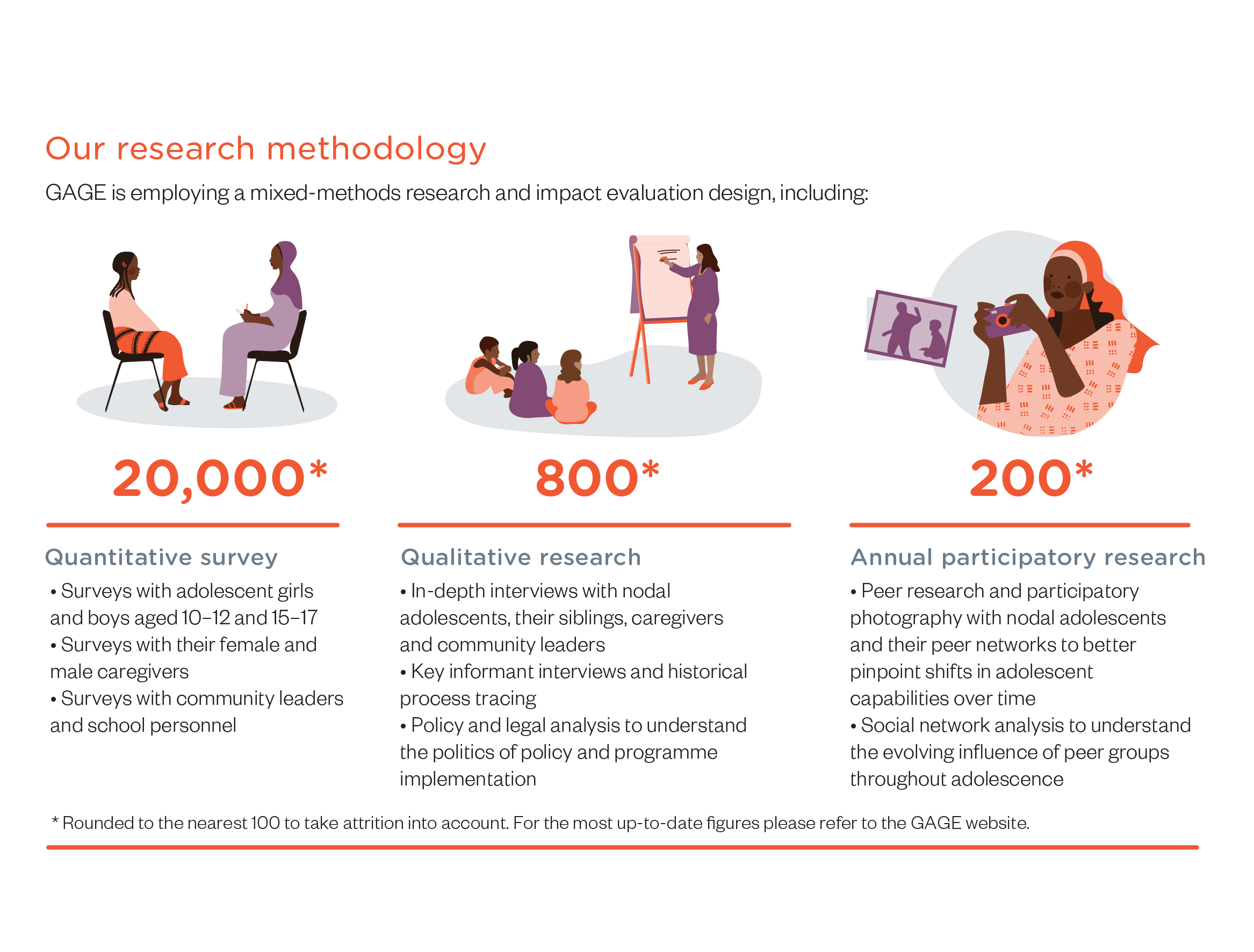Our research methodology
GAGE employs a mixed-methods research approach that includes analysing existent data as well as collecting and analysing new longitudinal quantitative and qualitative data. This combination helps us to understand adolescent experiences across the second decade of life, including which change strategies work for which adolescents, at which ages and in which contexts.

We will collect three rounds of data with adolescents between the ages of 10 and 19. Our quantitative surveys will take place in 2017/2019, 2019/2021 and 2021/2023. The data collection is staggered across countries to maximise learning. Our qualitative work will be timed to follow preliminary analysis of the quantitative work to ensure the surveys show us ‘what’ adolescents’ lives look like. For example, how many are in school and accessing reproductive health services? The interviews can help us understand ‘why’ . For example, why did they leave school and what are blockages to health-service uptake?